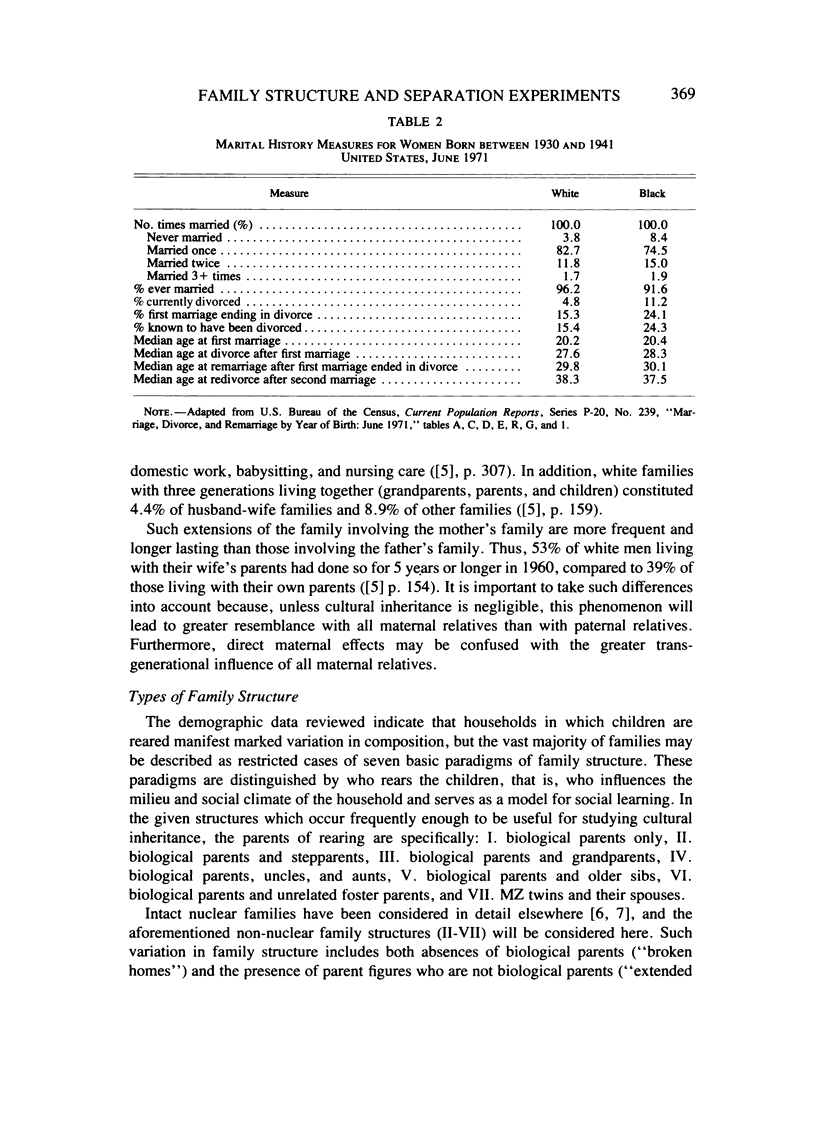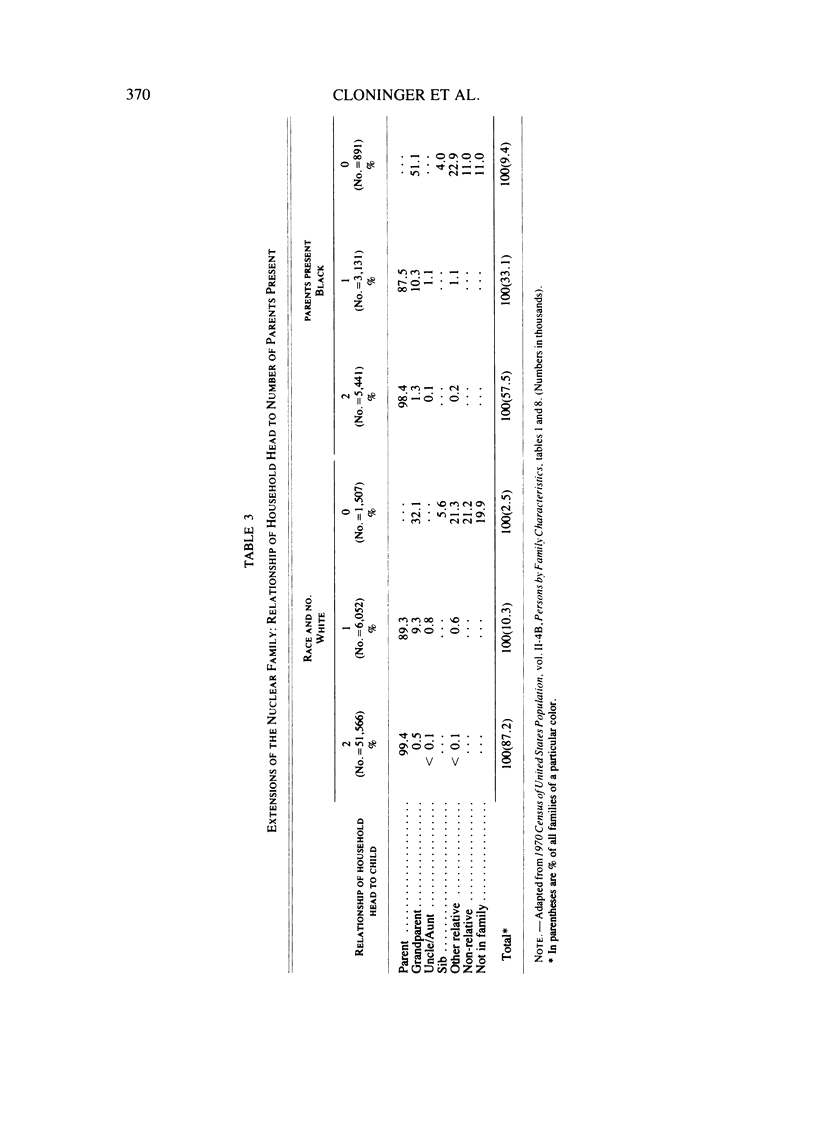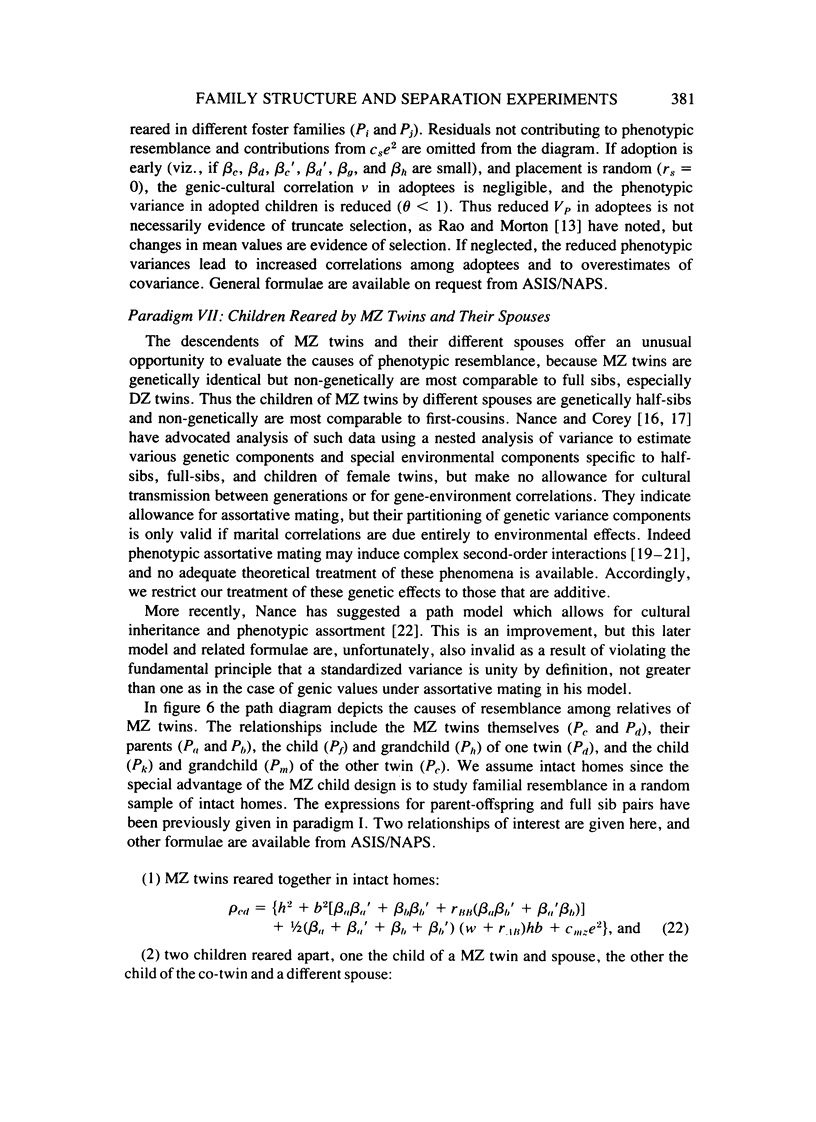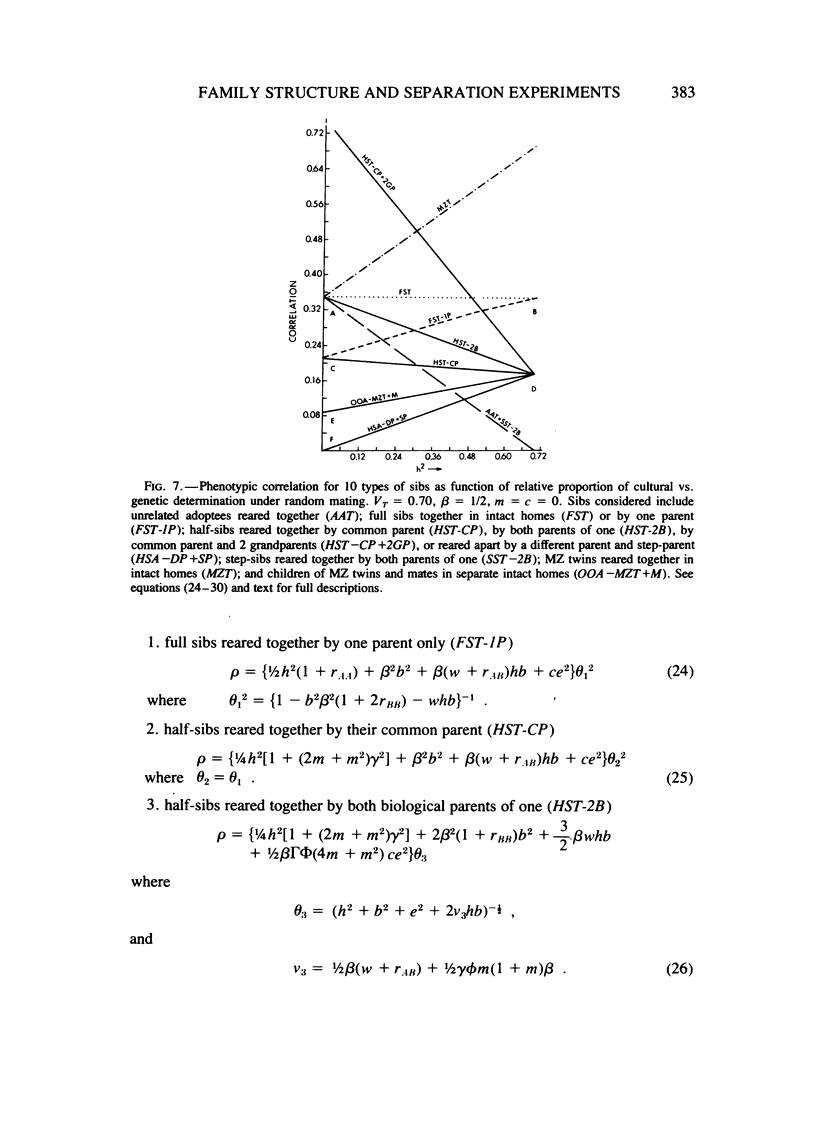Abstract
Demographic data about family composition or structure in the United States is reviewed. About 25% of white children and a majority of black children are reared in either broken or extended families, and this must be taken into consideration for valid studies of cultural inheritance. Atypical family structures are described including those in which parents include: biological parents, stepparents, grandparents, uncles, aunts, sibs, foster parents, and their spouses. General formulae for a wide variety of kinship correlations are derived using path analysis. The multifactorial model presented allows for cultural inheritance, polygenic inheritance, correlated sibling environments, and phenotypic assortative mating (as previously described for intact families) plus extensions necessary for the analysis of separation experiments. These extensions allow for variable family structure and differences in parental influence due to separation, age or stage of development of the child, birth order, or type of relationship. Family structure is observed to have a marked effect on familial resemblance. Computer simulation studies demonstrate marked heterogeneity among phenotypic correlations for kinships of the same degree of genetic relationship arising in different family structures. Analyses of multiple types of sibs and other relatives in variable family structures offer great promise for the study of cultural inheritance.
Full text
PDF






















Selected References
These references are in PubMed. This may not be the complete list of references from this article.
- Cattell R. R., Nesselroade J. R. Likeness and completeness theories examined by sixteen personality factor measures on stably and unstably married couples. J Pers Soc Psychol. 1967 Dec;7(4):351–361. doi: 10.1037/h0025248. [DOI] [PubMed] [Google Scholar]
- Cloninger C. R., Rice J., Reich T. Multifactorial inheritance with cultural transmission and assortative mating. II. a general model of combined polygenic and cultural inheritance. Am J Hum Genet. 1979 Mar;31(2):176–198. [PMC free article] [PubMed] [Google Scholar]
- Fast I., Cain A. C. The stepparent role: potential for disturbances in family functioning. Am J Orthopsychiatry. 1966 Apr;36(3):485–491. doi: 10.1111/j.1939-0025.1966.tb02392.x. [DOI] [PubMed] [Google Scholar]
- Nance W. E., Corey L. A. Genetic models for the analysis of data from the families of identical twins. Genetics. 1976 Aug;83(4):811–826. doi: 10.1093/genetics/83.4.811. [DOI] [PMC free article] [PubMed] [Google Scholar]
- Rao D. C., Morton N. E., Yee S. Analysis of family resemblance. II. A linear model for familial correlation. Am J Hum Genet. 1974 May;26(3):331–359. [PMC free article] [PubMed] [Google Scholar]
- Rice J., Cloninger C. R., Reich T. Multifactorial inheritance with cultural transmission and assortative mating. I. Description and basic properties of the unitary models. Am J Hum Genet. 1978 Nov;30(6):618–643. [PMC free article] [PubMed] [Google Scholar]


